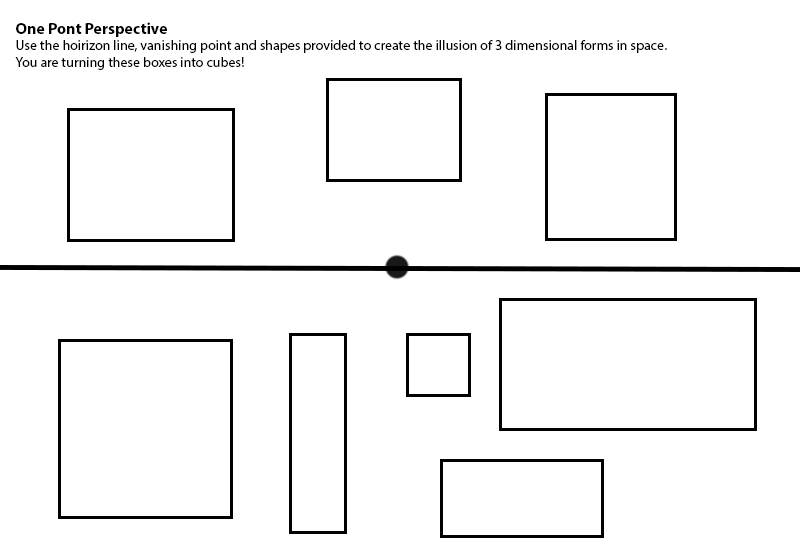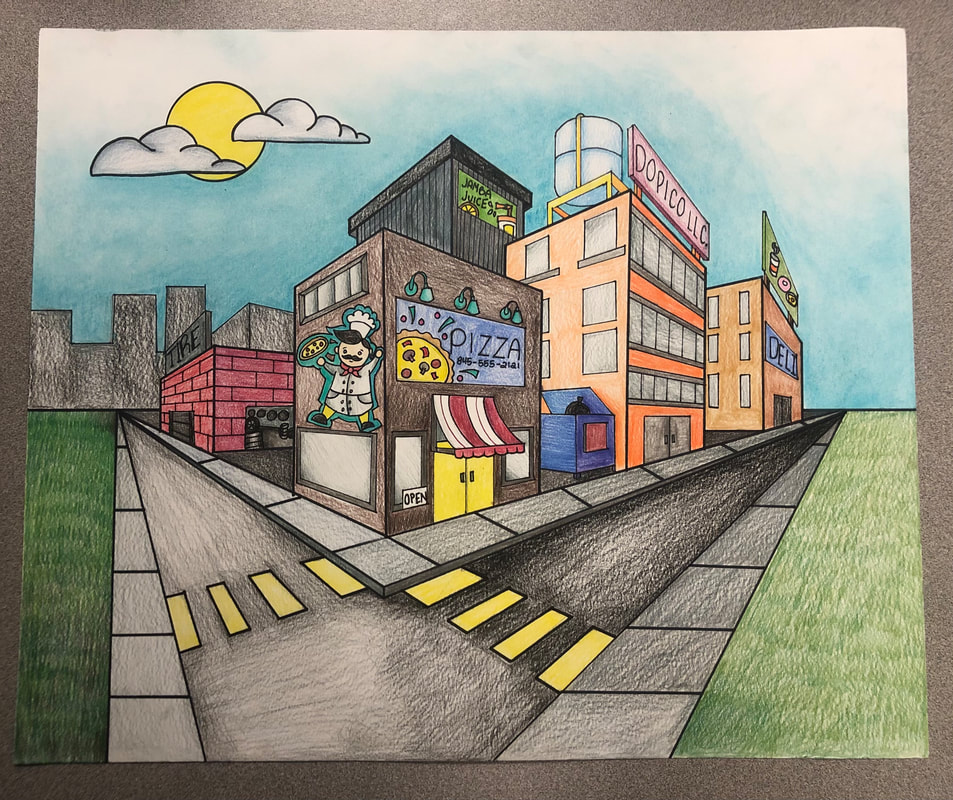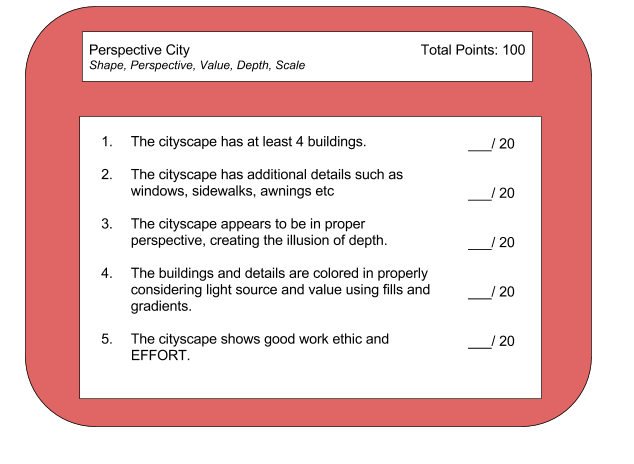|
Perspective in the Workplace
Architects, interior designers, landscapers etc all use perspective drawings in their jobs. Perspective is used a communication tool between themselves and the client that hired them. Creating these drawings using accurate perspective allows them to give their clients a better idea of what the project will look like when it is complete. |
Linear Perspective Perspective in art is a drawing technique used to create an illusion of a 3 dimensional space on a 2 dimensional surface (the paper, or computer screen in our case). Perspective is what is used in a painting to give it dimension, form, a sense of distance and a feeling of it being "real". The rules of perspective apply to ALL subjects from portraits to landscapes. In Western art linear perspective was created in the 15th century. Prior to that, artwork that depicted space tended to look kind of topsy turvy and not quite right. The Renaissance artist Leon Battista Alberti and architect Filippo Brunelleschi are credited with the "invention" of linear perspective. We still use their vanishing point system today! In a perspective drawing there are a few things you will find. First is a vanishing point (or 2). This is the point in the work that each line and shape recedes back to. The vanishing point is the most important part of drawing properly in perspective. Next is a horizon line. This is a straight line across the entire piece that separates the sky from the ground. By adding a horizon line, the viewer can tell what is the sky and what is the ground allowing the buildings to look real. If the object or building is taller than the horizon line it slopes down towards the vanishing point, and if it is shorter than the horizon line it slopes upwards towards the vanishing points. Modern Perspective With the invention of computer based art, we have developed an easier and faster way to create artwork in perspective using Adobe Illustrators, Perspective Grid tool. It automatically creates the 2 point linear perspective grid that allows us to create buildings and objects with straight lines in perspective. You can easily adjust the viewpoint to be centered, high or low depending on what you are trying to achieve with your drawing. |
Assignment # 1- Perspective Question Worksheet
This assignment is a worksheet you will do in class!
This assignment is a worksheet you will do in class!
- What is perspective?
- Why is perspective used in artwork?
- What is a vanishing point?
- What is a horizon line? What does it do for an artwork?
- Who needs to use perspective drawing? Give at least 2 examples.
- Why do they need to use perspective drawing?
|
Assignment # 2: One Point Perspective Worksheet
This is also a physical worksheet we will do in class together.
|
Assignment # 3: 2 Point Perspective Worksheet
This is also a physical worksheet we will do in class together.
| ||||||||||||
|
Assignment # 3: Self Reflection Question
(This is a worksheet you will attach to the back of your finished drawing) |
Assignment #4- Street Corner- Drawing
You are to create a city street corner using pencil, sharpie outlines and colored pencils:
Tutorial Below:
| ||||||


